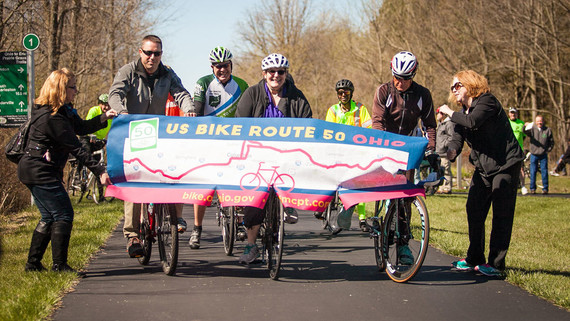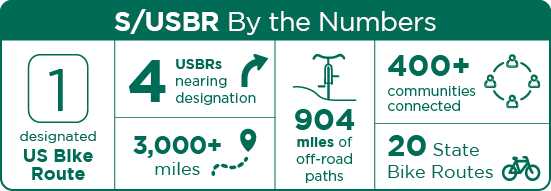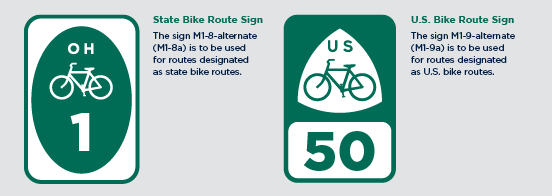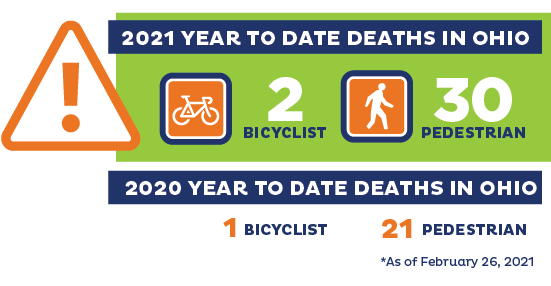 Did you know that Ohio has a strategic statewide bicycling network?
It’s called the State and US Bike Route System (S/USBR), and it’s made up of more than 3,000 miles of on- and off-road bike facilities that connect over 400 communities across the state.
The state system builds off of the U.S. Bike Route System, a network of 41 routes designated by the American Association of State Highway and Transportation Officials (AASHTO) that cross 26 states and the District of Columbia. Ohio’s system connects it to the country at large, and also provides connections between Ohio communities for intrastate travel, recreation and tourism.
 How was the network developed?
The proposed S/USBR System was developed as part of Access Ohio 2040, Ohio’s long-range transportation plan. It will inform strategic investment that ensures Ohio is connected by a backbone system of routes providing basic accommodations for people traveling by bike. Future projects could provide safer, context-sensitive facilities for bicyclists such as paved shoulders, bike lanes, or paths.
Today, routes identify the most comfortable and most direct connections given the current conditions for biking. The amount of traffic, presence of bike facilities and roadways, speed limits, pavement conditions, and topography were considered when selecting routes. The system also takes advantage of as many of Ohio’s hundreds of miles of off-road trails as possible. State and partner agency staff and volunteers assisted in reviewing the proposed routes in their communities.
The local jurisdictions who own the roadways or trails on which the S/USBRs run also have a role to play, by providing resolutions of support for the routes. These resolutions state support for particular routes to be designated as part of the system and acknowledge that there will be future efforts to sign these routes. The resolutions support ODOT’s application to AASHTO to officially designate the routes. USBR 50 was the first to be fully designated in 2014 and already has signs installed along the length of the route.
From planning to implementation.
Analyzing Comfort – We’ve discussed the use of Level of Traffic Stress analyses in past issues of GroundWork, and how this data can be used to plan bike networks and make improvements. We’re doing the same for the S/USBRs; in 2020 an LTS analysis was conducted for the system to understand where future improvements might best be targeted. Sections of the system that are considered LTS 4 are areas where accommodations are needed to improve comfort. Around 44% of the current routes have an LTS score of 1 or 2 – considered to be comfortable for the mainstream adult population.
See the LTS ratings on TIMS
Applying for Designation – ODOT is currently collecting a few final resolutions from the roadway owners involved with the US Bike Routes. This Spring, ODOT will apply to AASHTO to designate portions of US Bike Routes 21, 25, 30, and 44 that have resolutions. ODOT intends to purchase and install signage for designated bike routes, with approval from local authorities.
 Want to learn more?
 Announcements
The American Academy of Pediatrics’ Put a Lid On It campaign supplies free bike helmets for Ohio children. Apply here by March 5 to receive helmets that you can distribute in your community.
The Active Transportation Academy’s Active Transportation Basics class is now available for on-demand e-learning from the Active Transportation Academy. It serves as a pre-requisite for hosts seeking community workshops. Sign up here.

|